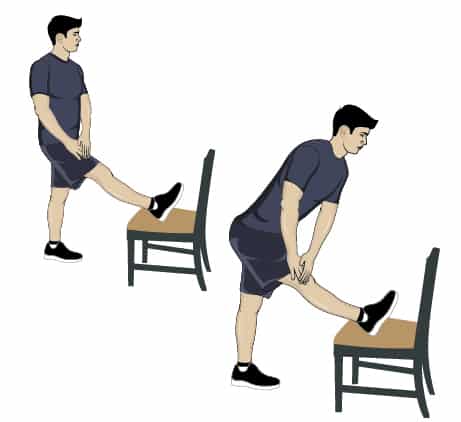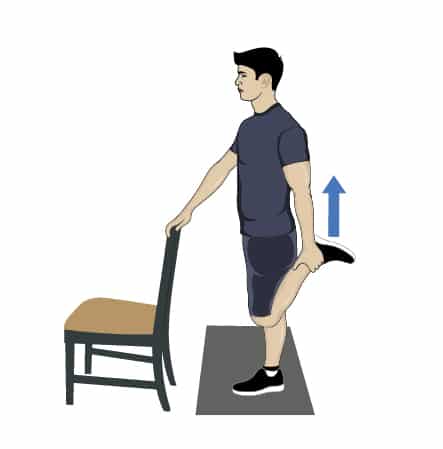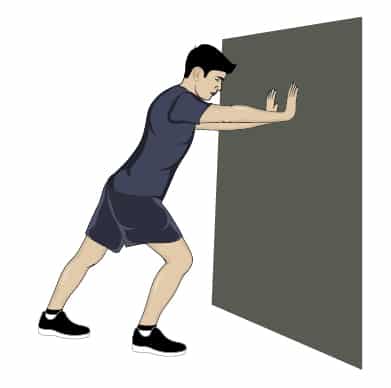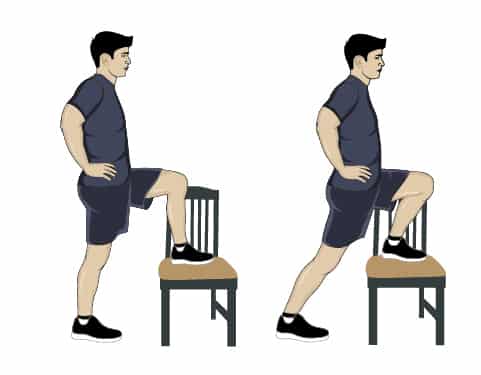Step outside for a daily dose of fitness
Better fitness might just start with lacing up your sneakers and heading out for a walk.
This easy-to-do exercise strengthens almost every major organ in the body, promotes optimal bone density, and boosts the immune system. Plus, it’s free, fun, and simple to do outside — even in cooler fall or winter weather — and it’s a great option when gyms are closed.
“Walking helps fend off cardiovascular disease and helps prevent osteoporosis. Weight-bearing forces on the long bones and spine contribute to fighting off weak and brittle bones,” says Gregory Brebach, MD, an orthopedic surgeon with Illinois Bone & Joint Institute.
Walking also improves blood flow, keeps weight down, strengthens the core and leg muscles, and clears the mind, Brebach says. He recommends walking one to two miles at a time, building up to one hour a day, depending on your fitness level.
The American Heart Association recommends at least 150 minutes or 2.5 hours of moderate intensity aerobic activity a week. But walking — even if below the minimum recommended levels — is associated with a decreased risk of mortality, according to a study published in 2018 in the American Journal of Preventive Medicine.
For all-around good health, enjoy a daily stroll with a friend, family member, or pet. Everyone will benefit.
Walk This Way
To get the most out of each routine, follow these expert guidelines
Pay attention to your body
Our bodies were designed to move, but everyone has their own way of moving. Start by looking in the mirror and doing your own personal gait analysis.
“Look at your feet to see if they point forward, which will allow you to activate your hips and glutes when you walk and push off your feet,” says Parul Shah, DPT, a physical therapist with Athletico in Morton Grove. Shah recommends keeping shoulders relaxed, not leaning forward, looking ahead, and keeping the arms loose for trunk rotation.
To maintain symmetry, be careful not to swing one arm across the body or too far in front. Think about activating the core and glutes when walking. Keep each stride around average length, between 2 to 2.5 feet. A stride that is too short or long puts extra stress on the back and hamstrings, Shah says.
Walk with purpose
For a more aerobic workout, move at a faster pace. Researchers analyzed various paces of walking and found that brisk or fast-paced walking (one that gets you out of breath for a few minutes) was associated with a 20% reduction in all-cause mortality and a 24% reduction in the risk of dying from cardiovascular disease, according to a study published in 2018 in the British Journal of Sports Medicine.
When you ramp up your stride to challenge yourself, focus on walking on your entire foot, says Corey Shackelford, fitness trainer at Redefined Fitness, a specialized gym in Wilmette. Strike with your heel and roll your foot forward to the ball of your foot, so you are not slapping your feet on the ground. Find a quicker cadence — the number of steps per minute — to increase intensity.
Wear comfortable shoes
Healthy feet are critical to walking with good form. Wearing a comfortable shoe with a wide toe box will help you get as much movement in your foot as possible, Shackelford says. Your foot muscles need to be conditioned to absorb your body weight, so strengthen your foot muscles by spending more time on your feet.
Vary your path
Make an adventure out of your walk. Change the terrain by building in trails and hills, which is a good way to challenge yourself, Shackelford says. Lean forward while walking uphill and slightly back when walking downhill, engaging a different set of muscles. You’ll work muscles at various angles, helping to avoid injuries. Walking in different locations, terrain, and environments will also help you appreciate the therapeutic value of walking in nature.
Walking Warm-Up
Try these stretches prior to walking, says Parul Shah, DPT, physical therapist with Athletico. Start by prepping your body for movement. Stand straight on one leg and lift and rotate the other ankle in a circular motion. Switch sides.

Propped Hamstring Stretch
While standing, prop one foot on a chair or step, keeping your propped leg straight and extended. Slowly lean forward until you feel a stretch behind your knee and thigh. Bend through your hips and not your spine. Hold for 30 seconds. Repeat two times on each leg.

Standing quad stretch
While standing, bend your knee and hold your ankle behind your back. Hold onto a chair or counter for support. Gently pull your knee back until you feel a stretch on the front of the thigh. Hold for 30 seconds. Repeat once for each leg.

Standing calf stretch
Stand in front of a wall. Step forward with one foot, keeping both feet pointed forward and back leg straight. Put your hands on the wall and lean forward, allowing your front knee to bend until you feel a gentle stretch along your back leg. Be sure your heel stays on the ground. Move closer or farther away from the wall, or bend your front knee more, to control the stretch. Hold for 30 seconds. Repeat once for each leg.

Hip flexor stretch
While standing, face a chair and place your foot on the chair’s seat, keeping your hands on your hips. Bend the knee that’s on the chair, stretching the front of the thigh and hip of the leg that’s on the ground. Hold for 30 seconds. Repeat once for each leg.
Originally published in the Fall 2020/Winter 2021 print issue.

Betsy is a freelance writer whose work has appeared in national and local magazines, as well as online. She’s an avid runner and triathlete.










